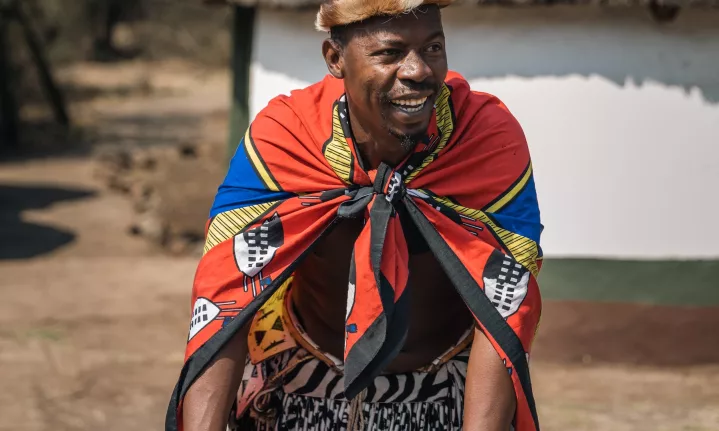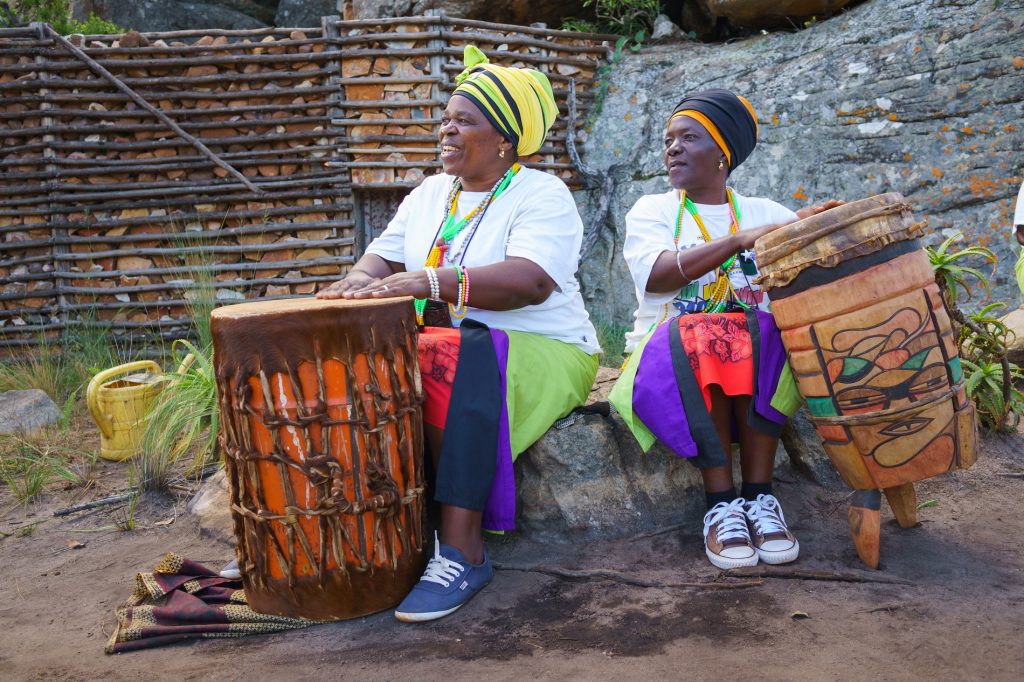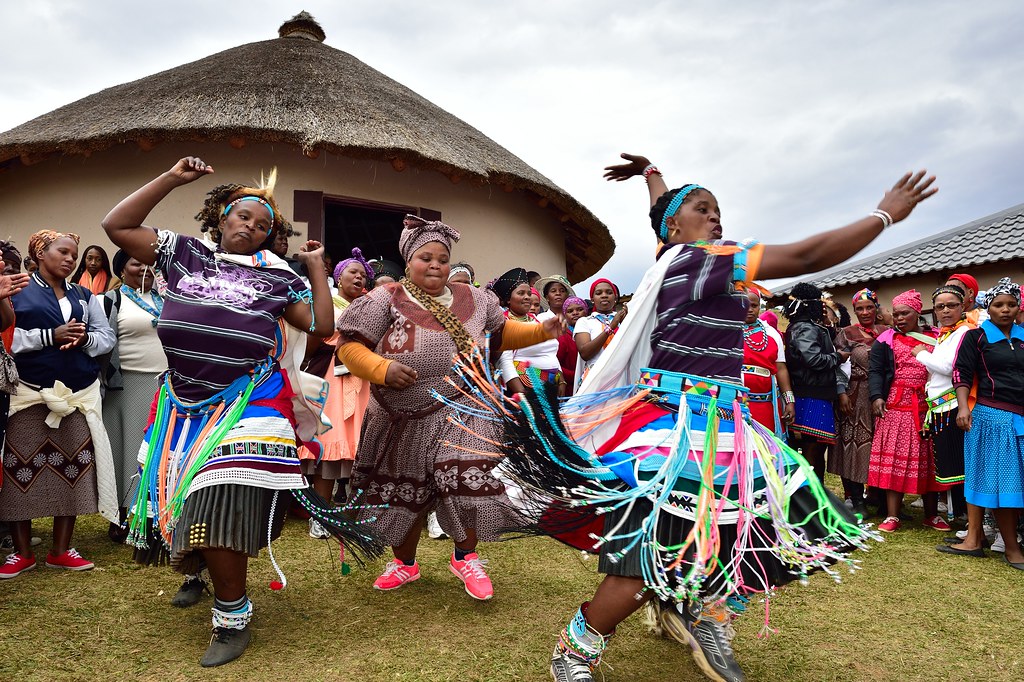The South African Culture Today Ideas
Table of ContentsThe smart Trick of South African Culture Today That Nobody is DiscussingHow South African Culture Today can Save You Time, Stress, and Money.Fascination About South African Culture TodayThe Main Principles Of South African Culture Today An Unbiased View of South African Culture TodaySouth African Culture Today Can Be Fun For Anyone
A matter of value in Zambian towns is the passing away of loved ones. All members of the village put money, time and initiative with each other for the burial of the deceased.Throughout the grieving duration; men stay outside your home and the women remain inside your home of the deceased. After speaking about the departed, the town strolls to the area of burial to claim their last goodbyes. Music and dance is a really important element of the Zambian culture. The numerous tribal units have their very own dancing kinds; however, makishi prevails among all tribes.
The Only Guide to South African Culture Today
When it involves music, drums are utilized one of the most, with a range of drumming ceremonies. In Zambia, bulk of individuals are Christian; Protestant and Roman Catholic. There are tiny groups of Muslims and Hindus, with the rest following local native tribal ideas.

South African heritage and society is immensely varied, and contains various groups of individuals who each have their very own customs and ideas. Having such a diversity of people and cultures is what makes South Africa so distinct. In truth sense of the expression, we are a rainbow nation.
South Africa has approximately 3 hundred thousand Portuguese individuals staying in it. Making it the 7th on the checklist of nations with one of the most Portuguese people in it outside of Portugal. Portuguese is not only a society, however it is likewise a language and a citizenship. Portuguese people originate from the nation of Portugal in Europe, nonetheless, as a result of Portugal (like numerous various other countries in Europe) discovering the world and conquering various other nations throughout the 15th 20th centuries, South Africa has what we call Portuguese South African's living in it.
Some Ideas on South African Culture Today You Need To Know
Among the noticeable functions of the topography is a plateau that covers almost 2 thirds of the center of the nation. The plateau complicated rises towards the southeast, where it culminates in the Drakensberg variety, part of a cliff that divides the plateau from the seaside areas. The Drakensburg includes Sparkling wine Castle, the greatest optimal in the country.
The area north of the Witwatersrand, called the bushveld, inclines downward from east to west towards the Limpopo River, which develops the worldwide boundary. The western area of the plateau, the middleveld, likewise descends in the direction of the west and varies in elevation in between the highveld and bushveld. Between the Drakensburg and the eastern and southerly coast, the land descends to the sea.
Nearer the shore there is a low-lying level called the eastern lowveld. Southwest of the plateau the country becomes considerably extra arid, providing means to the stony desert of the Great Karroo, surrounded on the east by the lower, better watered plateau of the Little Karroo. Separating the completely dry southerly inside from the sandy coastal of the southerly coastline and West Cape is one more array, the Langeberg.
Our South African Culture Today Statements
The country's racially, ethnically, and politically divided background has actually generated nationwide and subnational signs that still work as icons of the nation, and others icons that are approved just by specific groups. The monuments to white inhabitant occupation and political prominence, such as the Afrikaner Voortrekker ("leader") Monolith in Pretoria and the Rhodes Monolith honoring the British colonial empire home builder and Cape head of state Cecil Rhodes, continue to be sectarian icons.
The first modern-day citizens were the San ("bushman") hunter-gatherers and the Khoi ("Hottentot") peoples, that rounded up livestock (South African culture today). The San might have been existing for thousands of years and left evidence of their existence in thousands of old cave paintings ("rock art"). Bantu-speaking clans that were the forefathers of the Nguni (today's amaZulu, amaXhosa, amaSwazi, and vaTsonga peoples) and Tswana-Sotho language teams (today's Batswana and Southern and Northern go to this website Basotho) moved down from eastern Africa as early as the fifteenth century

Both former republics of the Orange Free State and Transvaal (South African Republic) were developed by Afrikaner inhabitants who defeated and dispossessed the Basotho and Batswana. Lesotho would certainly have been by force incorporated right into the Orange Free State without the expansion of British protection in 1869. The best unification of the country arised from the South African Battle (18991902) between the British and both Afrikaner republics, which decreased the nation to spoil at the beginning of the twentieth century.
Afrikaners traditionally considered themselves the only real South Africans and, while approving complete citizenship to all residents of European descent, denied that condition to individuals of color up until the autonomous transition of 1994. British South Africans keep a feeling of cultural and social link to Great Britain without weakening their identity as South Africans.
Getting The South African Culture Today To Work
The variety and fragmentation within ethnic groups and the equilibrium of stress in between those teams throughout the twentieth century prevented interethnic civil problem. While intergroup stress over sources, privileges, and political dominance remain, those disputes are as most likely to pit Zulu against Zulu as Zulu versus Xhosa or African versus Afrikaner.
From colonial India, British sellers and administrators brought the rounded metal decorative roofs and slim lace job pillars that still symbolize the terraces of cottages in the areas and cities throughout the nation. Houses of worship contribute a vital building element even in the smallest communities. In enhancement to the skyrocketing steeples and traditional stonework of Afrikaans Dutch Reformed churches, Anglican churches, synagogues, mosques, and Hindu shrines offer variety to the religious architectural scene.

Slaughtering and the brewing of conventional cereal beer are crucial in securing the participation and goodwill of the ancestors who are taken into consideration the guardians of good fortune, prosperity, and wellness. Indian areas maintain their native culinary practices and use them on Islamic and Hindu ritual and ceremonial events. Afrikaners and Coloured individuals collect at weekend breaks and unique celebrations at multifamily barbecues called braais, where community bonds are enhanced.
Since this was the primary economic business of both black Africans and white homesteaders, problem between those groups focused on the belongings of grazing land and animals. In 1867, the largest diamond down payments worldwide were uncovered at Kimberley in the west main area. The check my reference riches from those fields assisted fund the exploitation of the best gold coral reef worldwide, which click was uncovered on the Witwatersrand in 1886.
All About South African Culture Today
This caused misunderstandings and deliberate misstatement in the dealings of white inhabitants and federal government authorities with African principals throughout the colonial duration (South African culture today). In the facility of African reserves, some aspects of public and primarily "tribal trust fund" land period were maintained, and also in white backwoods, kinds of public period were still exercised in areas with African communities
After the autonomous change of 1994, programs for land restitution, redistribution, and reform were set up, however development has actually been slow-moving. The white minority still manages eighty percent of the land. In the wake of agricultural land invasions in Zimbabwe, the Department of Land Affairs has actually vowed to speed land redistribution.